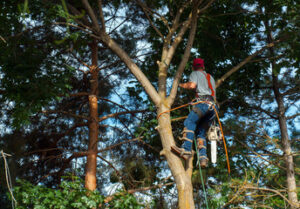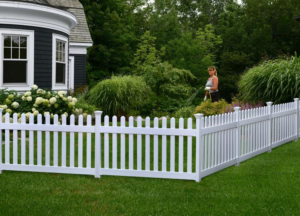Rock Climbing Arizona is an activity that has a strong physical component. It helps you build balance and develop your arms, back, and core. It also improves your endurance. You can practice this sport at a gym or outdoor club.

Accomplished climbers move fluidly and precisely between points of contact on a rock wall. They transfer momentum, create and conserve power, and utilise strategic hand grips and foot placements with precision.
Rock Climbing is a great workout for your entire body. It strengthens and tones muscles in your arms, legs, and core. It also helps develop your balance and endurance. It’s a fun and rewarding way to get outdoors and enjoy nature. And the best part is, you don’t need any expensive equipment to begin. All you need is a good belay, and a few pieces of gear that can be purchased for under $100.
It’s also a great cardiovascular workout. According to a study from the British Journal of Sports Medicine, rock climbing increases your heart rate and burns similar amounts of energy as running or cycling at a moderate pace. Rock climbing is also a great stress reliever, helping to reduce levels of cortisol and epinephrine, which are the hormones that cause stress. However, it’s important to be mindful of your environment when climbing. Remember to respect the natural world, and always follow the principles of Leave No Trace, including leaving the area as you found it.
When starting out as a climber, it’s essential to take the time to warm up and stretch. This will help prevent injury and increase your performance. Begin by doing dynamic stretches like arm circles and leg swings to loosen up your body. Afterwards, you can gradually ease into your climb by doing some easy routes.
Climbing can be hard on the joints, especially the ankles and shoulders. The most common injuries among climbers are twisted ankles, pulled fingers, and strained shoulder or rotator cuff muscles. These injuries occur primarily due to overtraining, rather than trauma. But these injuries can still be very painful.
Rock climbing is a full-body exercise, and it requires an immense amount of power to make it up a steep wall. The forearms and biceps are the most important muscles, but your legs are just as crucial. To improve your footwork and endurance, try this simple drill: Stand with your feet shoulder width apart, then squat down until your thighs are parallel to the floor. Hold this position for 30 seconds, then repeat.
It’s fun
Climbing is one of those sports that’s incredibly fun to do if you’ve got the right mindset. It’s also a great way to build confidence, and that’s why many people come back to it over and over. They want to try harder routes and achieve that feeling of accomplishment again. This desire to keep climbing leads to a lot of progress in a short amount of time. The sport can also be very social, and it’s a great way to make friends who share the same passion for rock climbing.
Rock climbing is a very dangerous sport and it’s important to take safety seriously. It’s recommended that you take a class or ask for help from a professional before trying out the sport. Aside from the technical knowledge, you should also have the right equipment to be safe. This includes shoes, a harness, chalk and a belay device.
The first type of climbing you will probably encounter is top roping, where you are attached to the rope directly above you. This is a good place to start, because you can fall at any time and there are no consequences. Once you are comfortable with this, you can move on to other forms of climbing. It’s important to find reliable and safe partners, especially if you are new to the sport. It can be very dangerous if your partner isn’t paying attention or doesn’t know how to properly use the belay device.
Some climbers choose to practice free climbing, where they can’t use any type of protection. This is a dangerous form of the sport, and should only be done with experienced partners. You should also bring a first aid kit and some snacks to maintain your energy levels. It’s a good idea to wear insect repellent, as well.
Many new rock climbers are intimidated by the sport’s high risks, but it doesn’t have to be that way. It’s actually much easier to be successful than you might think. It’s all about getting the right mindset, and learning how to deal with failure in a positive way. If you can master these skills, it will be much easier to overcome your fear of falling and become a better climber.
It’s challenging
Climbing is a challenging sport that requires an incredible amount of mental agility. It’s not just about brute strength; even the strongest climbers are often overshadowed by their mental prowess. This is especially true in competition climbing, where a well-trained mind can make all the difference between victory and defeat.
One of the challenges of rock climbing is making decisions about where to place your hands and feet. You also need to decide how many fingers to grip each hold with, and the angular orientation of those holds matters as well. These factors can be difficult to understand for first-time climbers, who are often surprised by the number of permutations that are possible when trying to navigate a route.
Another challenge is the need to maintain control under pressure. This is particularly important in competitive climbing, where the pressure to perform can be incredibly intense. While these psychological challenges are a part of every competitive sport, they are exacerbated in the case of climbing. Fortunately, these difficulties can be overcome with practice and intention.
Rock climbing is a fun way to get your body moving and burn calories. A recent study published in the Iranian Journal of Public Health found that rock climbing leads to significant improvements in your VO2 max, a common measure of cardiovascular fitness. This is good news, as rock climbing can be a good alternative to more traditional forms of aerobic exercise like running.
However, it’s important to keep in mind that climbing is a dangerous sport and can cause serious injury if not performed correctly. If you’re new to climbing, it’s a good idea to start with a beginner-friendly class to learn the basics. Then, once you’ve mastered the fundamentals of the sport, you can challenge yourself to take on more advanced routes.
If you’re looking for a more social and challenging way to enjoy rock climbing, try a group workout. A group workout is great for building camaraderie and teamwork and can help you stay motivated throughout your training. It can also be a good way to meet other climbing enthusiasts.
It’s social
Climbing is an intensely social sport, as it requires teamwork between two people. Climbers have to communicate with each other about safety checks, gear decisions and how to solve problems on a route. They also share a sense of accomplishment when they reach the top of a difficult climb. This sense of achievement fosters a desire to set and pursue other goals.
It also encourages kids to practice positive social behaviour, such as helping others when they are in need or expressing gratitude to other climbers for their help. This is a critical life skill that helps kids develop a more well-rounded sense of self.
The social dimension of climbing can be particularly pronounced during competitions, where participants interact with each other more frequently. However, it’s not clear whether this is due to the specific setting of a competition or because of the way that competitions structure the social interactions of climbers. In some cases, it’s been found that competitions can lead to a negative social environment in which a climber’s thoughts are occupied by their own performance and the concerns of other competitors.
One of the most important skills for rock climbers is learning how to manage fear in a constructive manner. This is a common challenge for climbers, but it’s something that can be overcome with practice. For example, if your kid gets stuck on a tough part of a climb, they will have to think about how to get past it without making any mistakes or hurting themselves. This will help them learn how to deal with setbacks and push themselves when they are feeling discouraged.
A good way to help your child develop this skill is to take them to a climbing gym or crag, where they can meet other people who are interested in the sport. You can also ask your local climbing club about upcoming competitions in the area. These competitions are a great opportunity for your child to interact with other climbers and learn how to compete in a safe and healthy way.
In many climbing situations, it’s impossible to climb without a partner. Both indoor and outdoor climbing require teamwork between a climber and a belayer. This teamwork is crucial for safety, and it teaches kids valuable communication skills. In addition, it teaches them to respect their climbing partners and be supportive of each other. It also teaches them how to be an effective leader, as they will need to make decisions about the safety of their partners.








